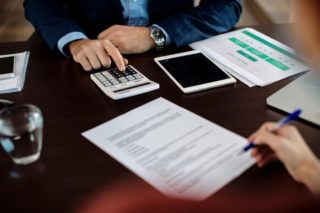A balance sheet is a financial statement that provides a snapshot of a company’s assets, liabilities, and shareholder equity at a given point in time. As a document that lists a company’s financial position, the balance sheet plays an important role in business analysis and decision-making.
Companies use balance sheets to track their financial performance over time and assess their ability to repay debts and finance new investments. The balance sheet also provides critical information for stakeholders, such as creditors and investors.
Many businesses that fail to properly manage their balance sheets end up going out of business. For this reason, it is important for all business owners and managers to have a strong understanding of how to read and analyze a balance sheet.
Balance sheet equation
The balance sheet equation is the fundamental accounting equation that must be true for all businesses at all times. It states that a company’s assets must equal its liabilities plus shareholder equity. This equation is represented as follows:
Assets = Liabilities + Shareholder Equity
This equation is important because it shows that a company’s assets are financed by either debt or equity. A company cannot have more assets than it can finance with its liabilities and shareholder equity.
If a company’s assets exceed its liabilities and shareholder equity, then the excess assets must be paid for with new debt or equity financing. Conversely, if a company’s liabilities and shareholder equity exceed its assets, then the company must sell assets or raise new financing to cover the shortfall.
The balance sheet equation is also important because it shows how a company’s financial position has changed over time. If a company’s assets have increased while its liabilities and shareholder equity have remained the same, then the company’s financial position has improved. Conversely, if a company’s assets have decreased while its liabilities and shareholder equity have remained the same, then the company’s financial position has worsened.
Components of a balance sheet
A balance sheet has three components: assets, liabilities, and shareholder equity.
Assets
Assets are anything of value that a company owns, including cash, investments, property, equipment, and inventory. These items are either used to generate revenue or will be converted into cash within one year.
Assets are classified as either current or non-current. Current assets are those that will be converted to cash within one year, while non-current assets are those that will not be turned into cash for more than one year.
Since current assets are the most liquid, they are typically used to finance short-term obligations. Non-current assets, on the other hand, are used to finance long-term investments and growth. To get an accurate picture of a company’s financial health, it is important to look at both current and non-current assets.
Identifying assets is a prudent way to manage a company’s resources and make sure that they are being used in the most efficient way possible. It is also important to keep track of assets for accounting and tax purposes.
Liabilities
Liabilities are anything a company owes to others, including money owed to suppliers, employees, taxes, and creditors. Like assets, liabilities are classified as either current or non-current.
Current liabilities are those that need to be paid off within one year, while non-current liabilities are those that can be paid off over a longer period of time. Most companies finance their current liabilities with their current assets. This is because current assets are more easily converted into cash than non-current assets.
Companies often use long-term debt to finance non-current liabilities. This is because long-term debt can be paid off over a longer period of time than current liabilities.
Overall, having a clear view of all a company’s liabilities is critical to business decision-making. This is because liabilities can have a major impact on a company’s cash flow and profitability.
Shareholder equity
Shareholder equity is the portion of a company’s assets that shareholders own. It includes both common stock and retained earnings.
Common stock is the portion of a company’s assets that are owned by shareholders who have voting rights. Retained earnings are the portion of a company’s profits that have been reinvested back into the business.
Overall, shareholder equity represents the claims that shareholders have on a company’s assets. A high level of shareholder equity indicates that a company has significant financial resources available to invest in growth or pay dividends to shareholders. A low level of shareholder equity may put a company at risk of financial difficulties.
Uses of a balance sheet
Companies can use a balance sheet for a variety of purposes, including the following:
Assessing a company’s financial health
A balance sheet can give businesses a good idea of their overall financial health. This is because it shows how much debt the company has and how much equity it has to finance its growth.
Predicting future cash flows
A company can predict its cash flows using a balance sheet since a balance sheet shows how much cash the company has on hand to pay its liabilities. Moreover, a balance sheet can also be used to predict a company’s future cash flows by estimating how much debt and equity the company will need to raise to finance its growth.
Determining a company’s value
A balance sheet gives an idea of a company’s value since it shows what the company owns (assets) and what the company owes (liabilities). A company with more assets than liabilities is typically considered to be more valuable than a company with more liabilities than assets.
Planning for growth
A balance sheet is helpful when a company is planning for growth. This is because a balance sheet shows how much debt and equity financing a company will need to raise to finance its growth.
Making investment decisions
Investors use balance sheets to make investment decisions. For example, if you are considering investing in a company, you may want to look at its balance sheet to see how much debt the company has and how much equity it has to finance its growth.
Looking at a company’s balance sheet can give you a good idea of its overall financial health. A healthy balance sheet typically has more assets than liabilities and a strong equity position. This indicates that the company has the resources available to pay its bills and finance growth.




